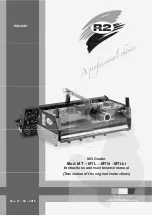
2
Functional Description
MS Detector
Thermo Scientific
Surveyor MSQ Plus Hardware Manual
35
The second solenoid valve is the On/Off control for the flow of nitrogen gas into the reference
inlet reservoir. The third solenoid valve is the On/Off control for venting the reference inlet
reservoir to the atmosphere. When the nitrogen gas flow is On, selecting either a Full System
Autotune or a Mass Scale Calibration causes the system to alternate between pressurizing and
depressurizing the reference inlet reservoir.
Clicking the Inject From Ref. Inlet button (in the Per Method Parameters table) has a similar
effect. When you click this toggle button, nitrogen gas pressurizes the reference inlet reservoir.
Pressurizing the reference inlet reservoir pushes the calibrant out of the reference inlet
reservoir bottle and into the 500
μ
L sample loop attached to the microinjection valve of the
MS detector. After the sample loop fills with calibrant, the microinjection valve switches to
the inject position. With the valve in the inject position, the sample loop is open to the
mobile phase stream from the LC pump. The stream pushes the calibrant out of the sample
loop and through the API probe. After the microinjection valve switches to the inject
position, the third solenoid valve switches to the On position, allowing the nitrogen gas to
vent to atmosphere and depressurizing the reference inlet reservoir.
The first restrictor allows a constant low flow of nitrogen gas to the API probe when the first
solenoid valve is turned off. See dashed line shown in
. The second restrictor shown
limits the flow of sheath gas and acts as a split flow regulator by forcing the
majority of the gas flow to the API probe through the tubing for the nebulizing gas.
Note
There is a constant low flow of nitrogen gas through the MS detector when it is not
in use. This low flow of nitrogen gas maintains a positive pressure in the source
compartment, preventing fumes from the solvent trap connected to the detector’s exhaust
port from being drawn into the detector. Depending on the API mode and whether the
instrument is in use, the nitrogen consumption is as follows:
• The ESI mode consumes approximately 720L/hr.
• The APCI mode consumes approximately 480 L/hr.
• The Standby mode consumes approximately 20 to 50 L/hr.
















































